Orifice flow meters are a kind of inferential flow meters. Here, Orifice plate generates a differential pressure, which is in relation with the flow passing through the line.
You may have heard of orifice-type flow meters. Many of you might have worked on them also. But do you know why orifice-type flow meters are so widely used? Let’s have a look at Orifice type flow meters. Orifice flow meters are a kind of inferential flow meters. Here, the Orifice plate generates a differential pressure in relation to the flow passing through the line.
Orifice flow meters are very simple in construction point of view. Only a circular disc and a hole (orifice plate) in it, and a transmitter connected to it. That is very simple if you look at it. The construction looks, however, simple but the engineering behind it is not.
Orifice Flow Meter Working Principle
Before we discuss the Orifice flow meter construction details, let’s have a look at a term called ‘Vena-Contracta’
As shown in below figure, whenever a fluid passes through a restriction, there is change in fluid’s velocity and pressure. The point where the fluid’s velocity is maximum is termed as Vena-Contracta point. The pressure at Vena-Contracta point is low.
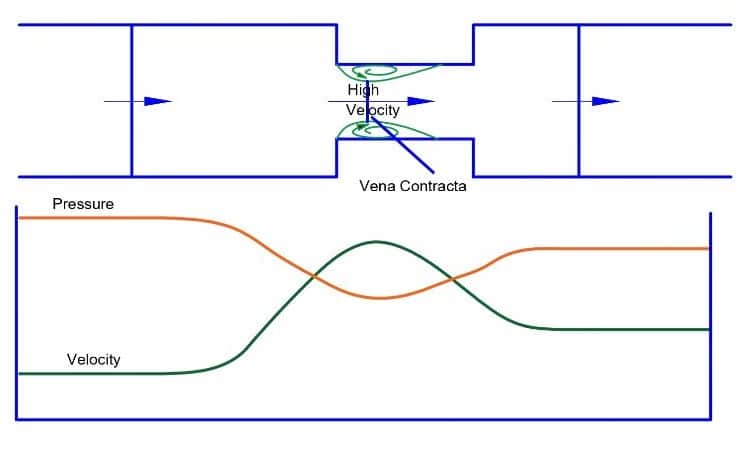
The orifice plate is a circular plate with a hole in it. This orifice plate is installed in a pipe. As the fluid passes through the orifice plate, a differential pressure is created across the orifice plate. The tappings are taken from the upstream and downstream of the orifice plate. The differential pressure is sensed using these tappings and is given to a transmitter. The transmitter is a differential pressure transmitter.

To get value of flow, we need to use square root functionality because differential pressure is proportional to the square of flow. In other words, flow is proportional to the square root of differential pressure.
The orifice plate is designed considering an important factor called Beta Ratio.
What is Beta Ratio?
Beta ratio is the ratio of orifice plate’s bore or says internal diameter divided by the pipe’s bore or say internal diameter.
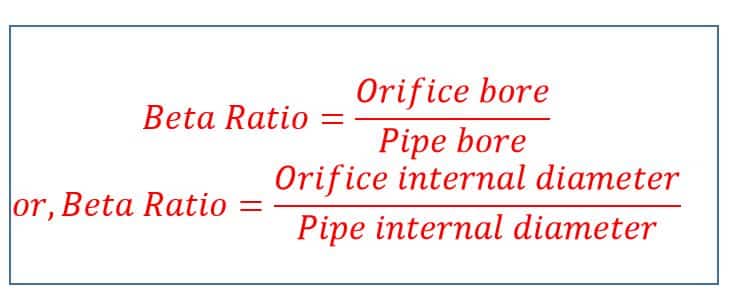
The value of beta ratio for any given orifice is between 0.3 to 0.75.
Types of Orifice Plates
1. Concentric type Orifice Plate
We use concentric orifices mainly for measuring the flow of clean liquids, gases, and low-velocity steam flows.
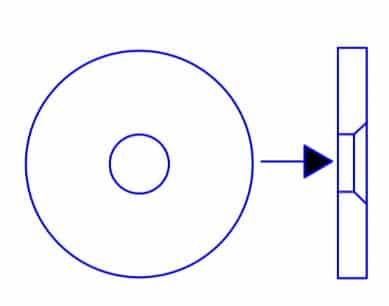
The plate of this type of orifice has a sharp square edge bore at inlet and a bevel d structure at outlet side. The bevel shape helps to recover the pressure drop. Also because of this bevel structure (usually at 45 degree), vortex do not form. This in turn helps reduce the damage to the orifice as well as pipe.
2. Eccentric type Orifice Plate
Eccentric type orifice plates look similar to concentric type orifice plate. The only difference is that here in eccentric type orifice plate, the bore is not in center.
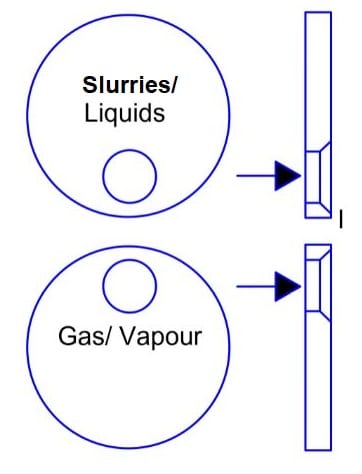
The bore is located in bottom in case of slurries or liquids with solids. While for gaseous fluids, the hole is located on the top side of the orifice plate. This allows for easy flow of the fluids.
3. Quadrant Edge Orifice Plate
The quadrant edge orifice plate has a slightly different structure. The plate is constructed such that 2 different bores are formed. These 2 different bores have counter-bore structures. This allows the quadrant edge orifice plate to measure the flow of highly viscous fluids.
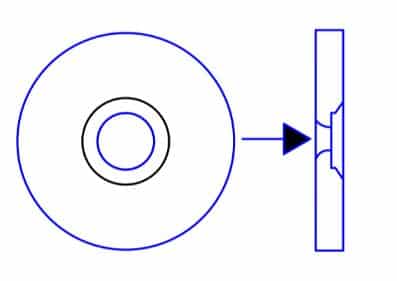
This orifice is mainly used in heavy oil, medicinal syrups and other heavy chemical’s flow measurement. Typically Reynolds number for these heavy viscosity fluids is below 10,000.
4. Segmental type orifice plate
Another typical variation we see in orifice plate design is segmental orifice plate. Different from all other orifice plate, this has only a segment of bore. All other orifice have a circular bore.
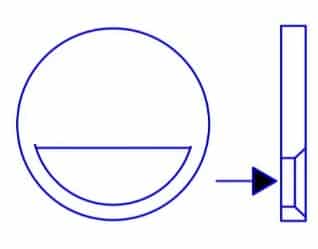
The main advantage of a segmental orifice plate is that it allows smooth flow for fluids with the highest viscosities, which may contain solids and slurries. Other structures, like the bevel, remain the same as those of a concentric-type orifice plate.
Why does an orifice have holes in the top and bottom?
Orifice plates are designed to measure flow of fluids only. It may be gas or liquid with verities of viscosity and even with slurries.
Now imagine you have an orifice installed in steam line. You will use a concentric or eccentric orifice with bore a top. Now what will happen when some part of steam condenses? Yes, you are right, liquid build up will start and create problems.
So solution for this is an orifice with a small bore in bottom. This small bore in bottom will allow liquid build up to pass easily.
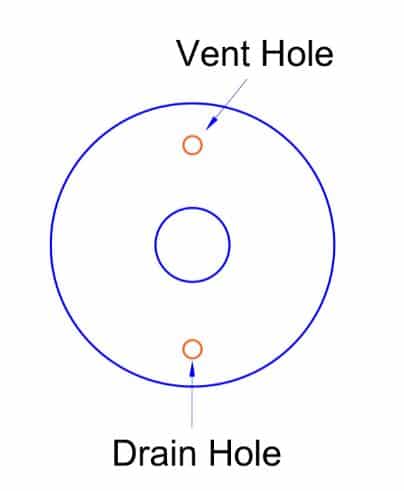
Similar is the case with liquid flow measurement. In this case, vapors will form and create problems. So here a small bore at top of orifice plate will solve problem of vapor build up.
Read Next: